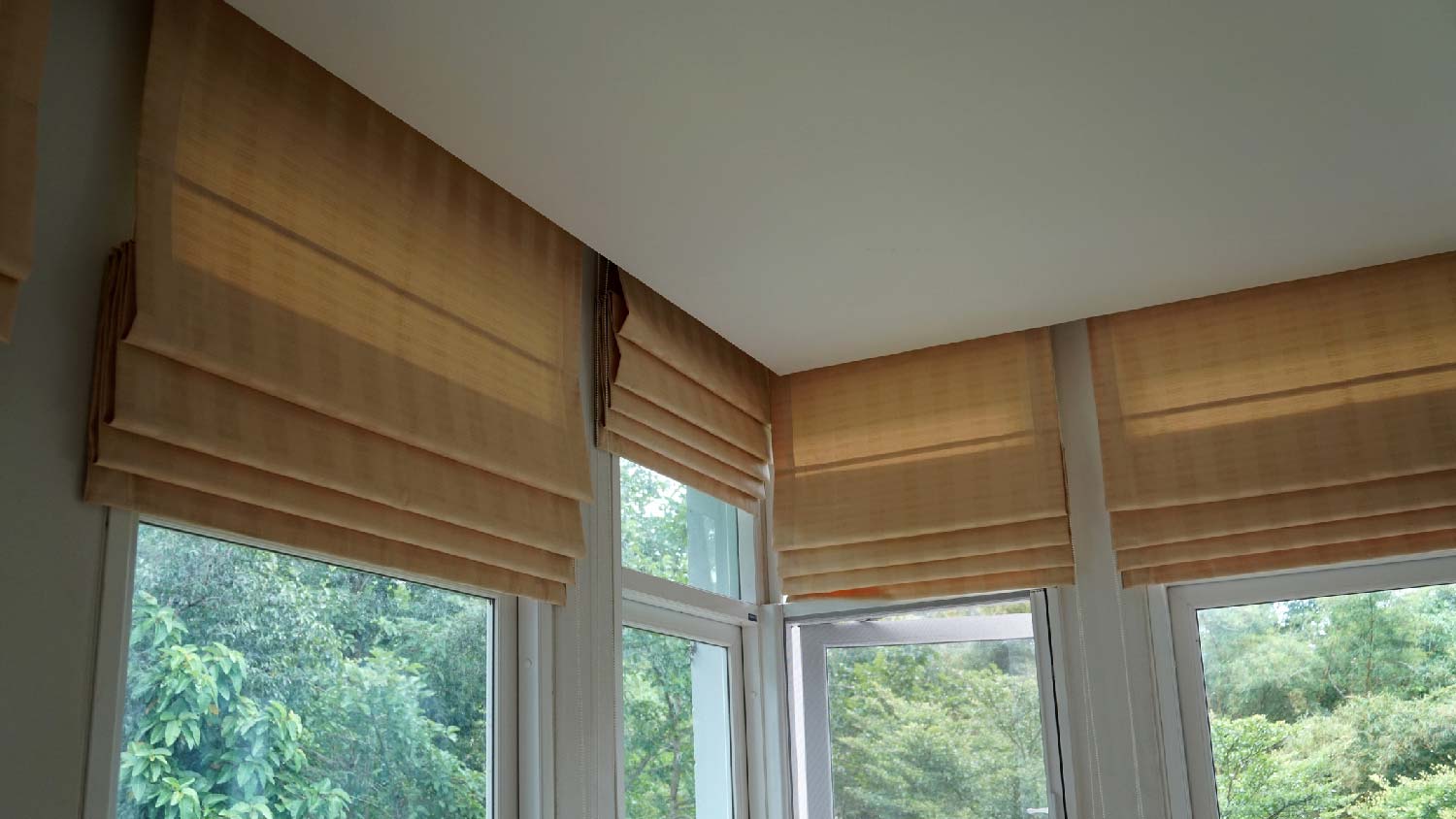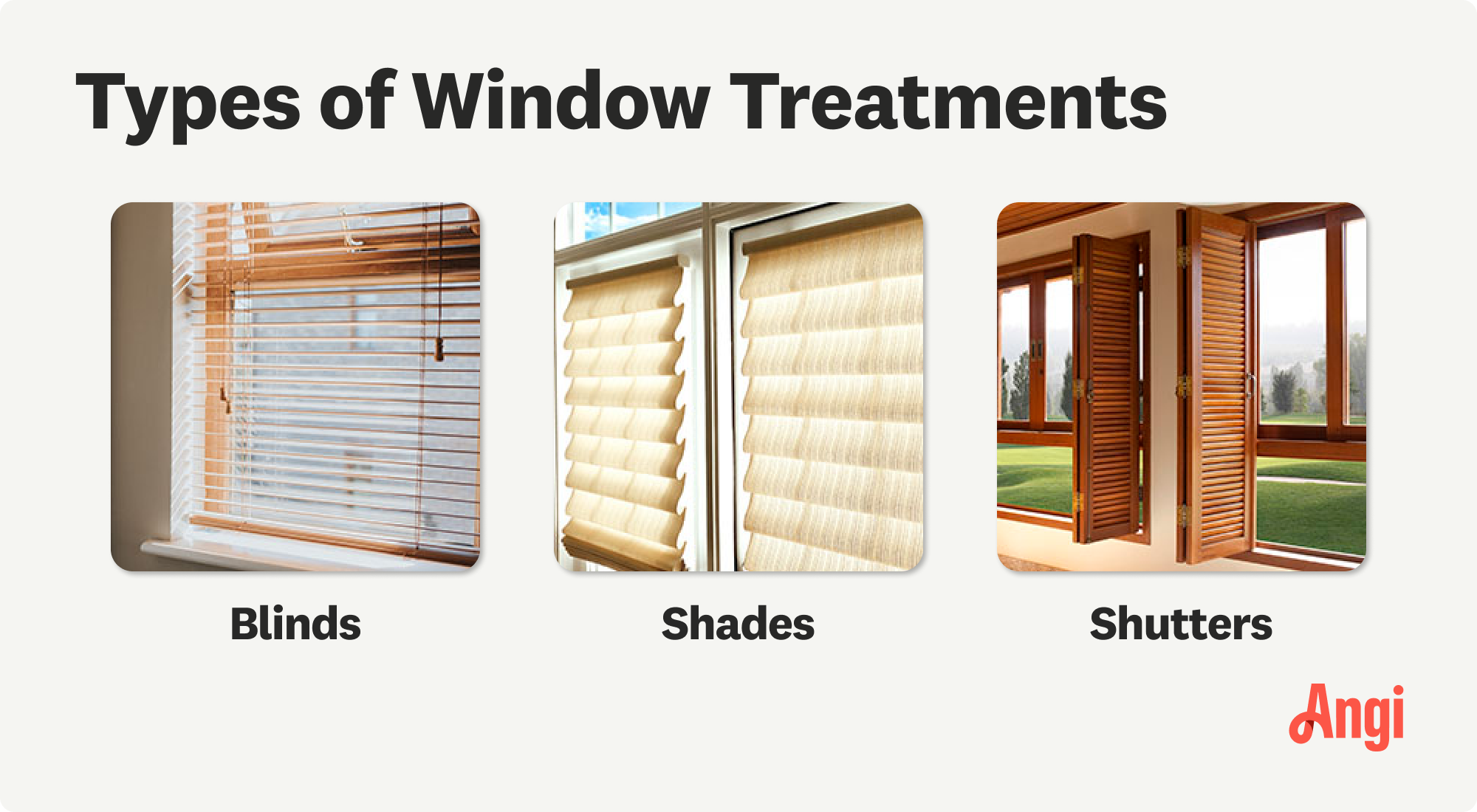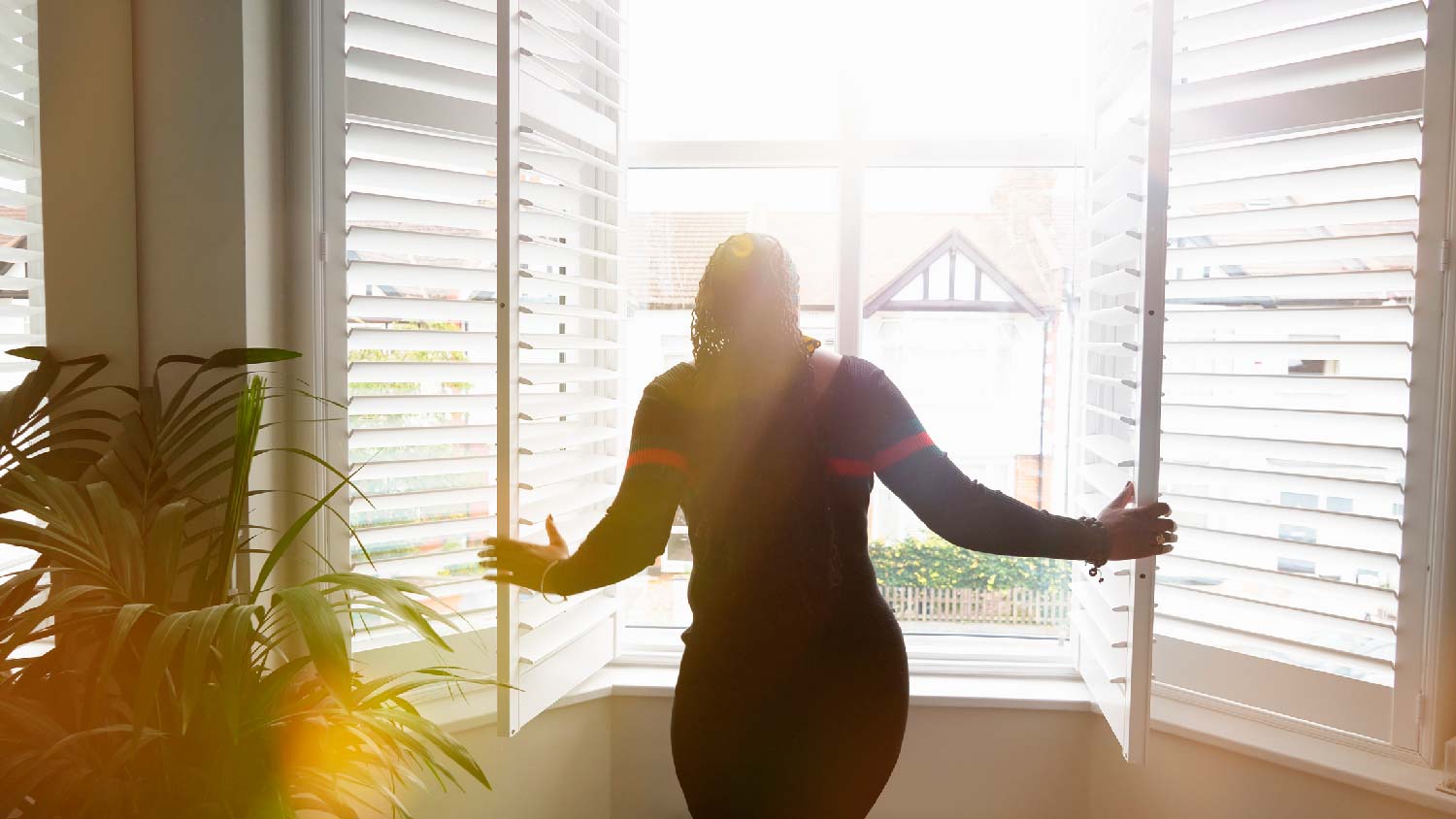What’s the Difference Between Blinds vs. Shades vs. Shutters?
Don’t be blindsided by all your window treatment options


Shutters are stationary blinds with rods to adjust the slats that offer a more traditional look and feel to a home.
Blinds are the most popular window treatment based on affordability and versatility.
Shades are affordable options, but they lack the privacy and light control of blinds and shutters.
When it comes to types of window treatments, most homeowners think of vinyl blinds. But, you may be surprised to find out that there are hundreds of options across multiple verticals (or horizontals, depending on your design preference) for you to choose from. When comparing blinds versus shades versus shutters, weigh your budget against your style to find the best fit.
We’ll break down some of the core differences to help you find the right treatments for your home.
What Are the Differences Between Blinds, Shades, and Shutters?

Blinds, shades, and shutters are all common types of window treatments, but they vary in a few key factors. Shades block some light and add privacy for a low cost. Blinds come in nearly endless options, but they can get pricey pretty quickly. Southern or farmhouse homes may love the look of shutters as long as you can handle the higher price tags that come with them.
| Feature | Blinds | Shades | Shutters |
|---|---|---|---|
| Privacy | Medium | Varies | Medium |
| Light control | High | Low | Medium |
| Cost | Low | Low to high | High |
| Durability | Low | Medium | High |
| Lifespan | 6–8 years | 7–10 years | 50+ years |
Blinds vs. Shades vs. Shutters: Differences in Appearance

With so many options on the market, you can customize your window coverings to fit nearly any look and feel. Whether you have a cat that loves sunbathing or you need darkness to ensure you get your beauty sleep, there’s an option for you.
Appearance
Shutters have louvers (angled slats) and offer a more traditional look to a home. Shades and blinds, on the other hand, come in more modern or creative styles. Shades are made of fabric in various styles, colors, and textures.
Similar to shutters, blinds also have slats and can be made of wood, faux wood, vinyl, plastic, metal, bamboo, or fabric, so you have many options to choose from.
Privacy
Blackout shades, in particular, offer the most privacy (at the highest cost). Shutters and blinds provide pretty good privacy, although someone could probably look inside if they’re right up against your window and looking through a gap.
Light Control
As the name—and high price tag—suggests, blackout shades can black out your entire room. However, if you’re looking to let in some sunshine, you’ll have to pull the shades fully up. This means you can’t control how much light you let in—it’s generally all or nothing.
With blinds and shutters, you can adjust the slats so you can let in as much light as you want while still having some privacy. If you want maximum light, you can also pull up the blinds completely, which you can’t do with shutters.
Options
If you really want to tailor your window treatment to your decor, shades are the most versatile of the bunch. You can pick from multiple colors, fabrics, textures, and styles to get a fully customized look. Blinds and shutters offer a more standard selection, although some brands are starting to branch out a bit in terms of design.
Efficiency Differences

All three options increase your home’s efficiency and are fairly durable, although some are more efficient than others.
Shutters can increase your home’s efficiency by acting as an additional insulation layer from the elements. They’re a popular choice in hot climates, where the rays and temps can quickly warm up your home and cause your AC to work in overdrive.
Blinds are relatively efficient, but certainly not at the same level as shutters, while shades vary depending on material and style.
Durability Differences
Shutters are built into the window frame and made of wood (or faux wood), making them the most durable option. Shades wear down over time with repeated use, but blinds—especially vinyl blinds with cords—are more likely to get broken or damaged. Using a local window treatment installer can ensure the material is correctly installed and lasts longer.
Cost Differences
While blinds are often the most affordable, it really depends on your design style and what you hope to get out of your window treatments.
Affordability
Vinyl blinds are the cheapest type of window treatment, with standard shades coming in a close second. Both blinds and shades come in more expensive styles that increase your all-in window treatment cost (like motorized shades, which can easily reach $2,600), but you can find pretty affordable options that don’t break the bank.
Shutters are the most expensive and aren’t as easy to install on your own, with shutter installation costs falling around $2,700.
ROI
Because they’re built-in, shutters or motorized shades offer the best ROI. They can also help lower your energy bills too. That being said, it’s not uncommon for homes to be sold without blinds, so offering any type of window covering as part of a sale can increase the value of your home.
Frequently Asked Questions
Shutters are still very common in Southern, farmhouse, and traditional-style homes, especially those in warm climates who can benefit from the increased efficiency. While modern homes and designs tend to shy away from shutters, shutters are a timeless design style that will likely be around for decades to come.
Due to safety concerns, corded blinds and shades are banned in the United States. Recently, industry-wide government regulations were passed to outlaw cords based on the risk of strangulation for children. You can still get cordless blinds and shades or ones with inaccessible cords, but you can no longer buy traditional corded blinds.















